How to Perform a Chromatograph Lighter Test on the Bloodhound
This article instructs you on how to perform a Chromatograph lighter test to validate that the gas sensor is working and that the Chromatograph is detecting butane (IC4/NC4) properly.
PREREQUISITES:
1) You must be present at the Bloodhound to execute this test.
2) You must have a butane lighter that works (will light with a strong flame).
3) THIS IS NOT A TRAP TEST – We are validating that the Bloodhound Chromatograph is working – You must have removed the inlet sample line as close to the Bloodhound as possible (there is often a 2″ hose which is connected to the brass barb on the Bloodhound Box itself – this is ok to leave on if it is more convenient than removing the hose from the barb on the Bloodhound).
4) If the extension in #3 above exists, inspect it closely for cracks, holes, and other wear which will prevent the entire butane sample from entering the Bloodhound.
5) You must have an instance of iBall Instruments Gas Chart running and properly connected to the Bloodhound.
HOW-TO:
1) Unplug the sample line from the Bloodhound (as mentioned in #3 and #4 in “PREREQUISITES” above).
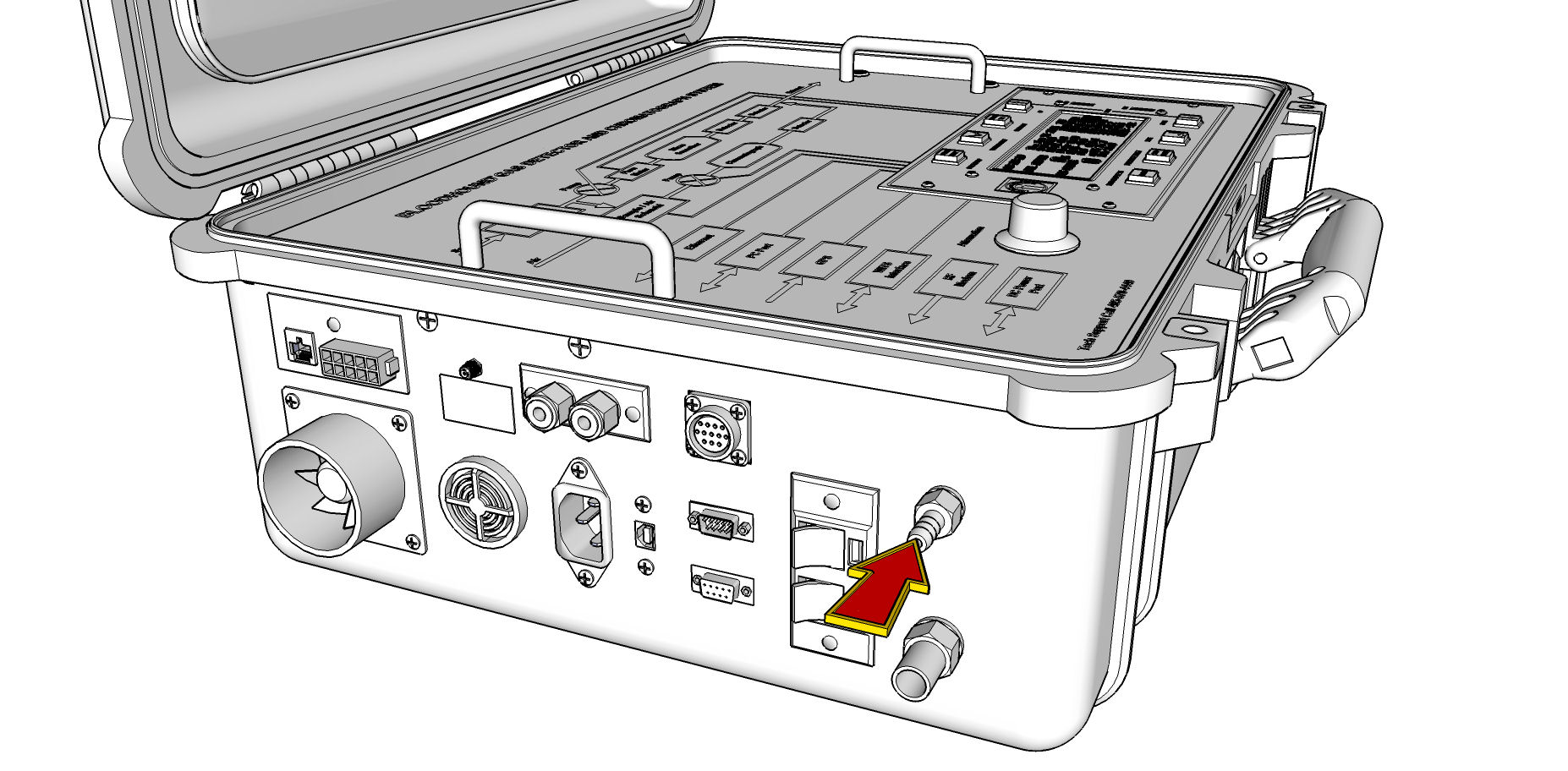
2) Allow the Bloodhound to run for a few minutes until the gas level reaches your current “zero” set point.
3) Observe the rotating field on the Bloodhound’s Face and wait for the “CGT” (Chromatograph Timer) field to roll by and observe the number to the right of this field. This is a “countdown” in seconds to zero. When this timer hits zero, the solenoid in the sample gas circuit will open and pull a 5-second sample of gas out of the line
NOTE: 5 seconds is the default). It is important to have Lighter Gas (Butane/IC4/NC4) in the sample line for the 5 seconds that this solenoid opens.
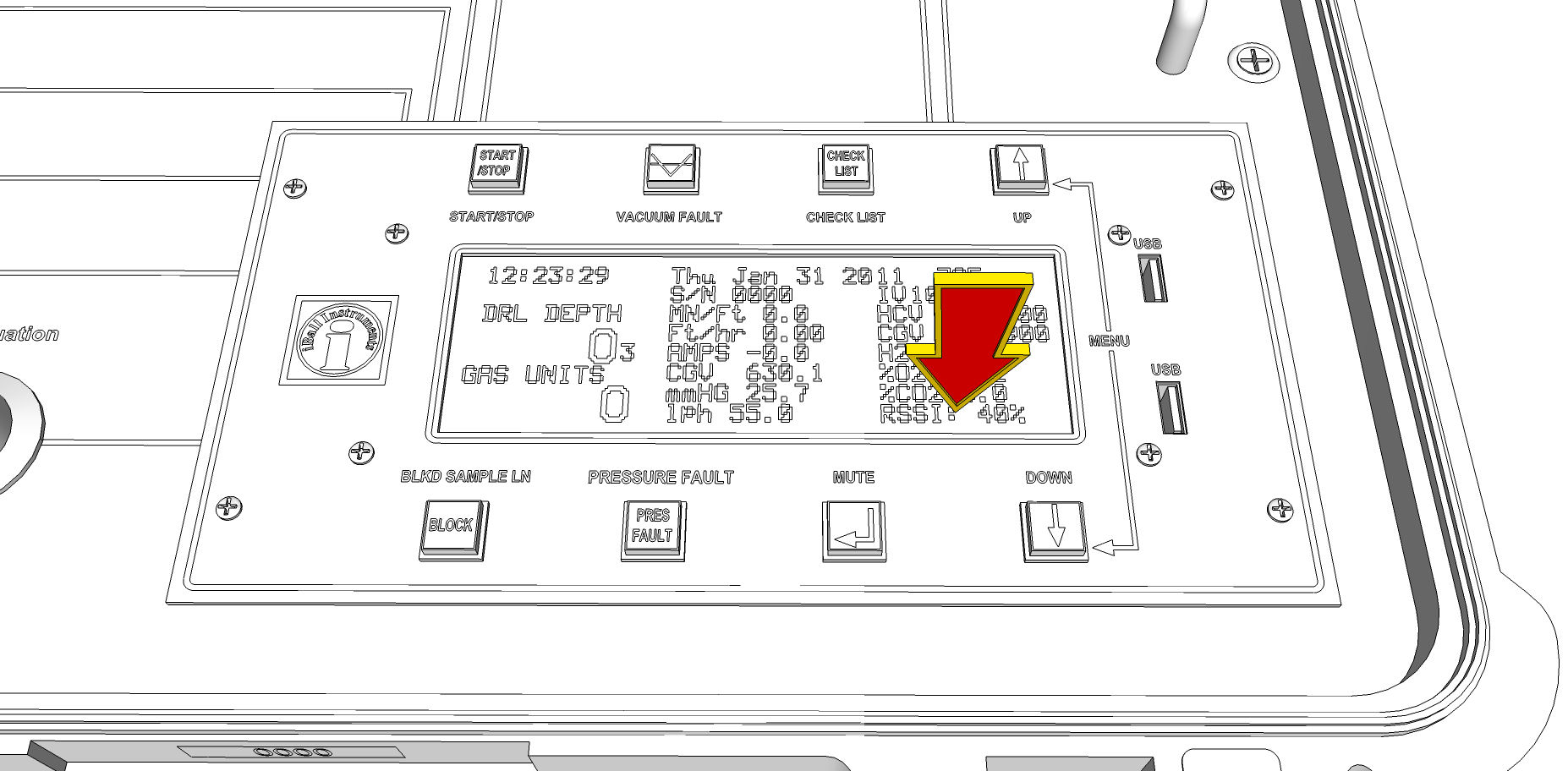
4) Keep watching this number until it hits about 10 seconds. At this time, couple the lighter as tightly as possible to the Bloodhound’s inlet and open the lighter for a full thirty (30) seconds in order to put enough gas in the line that some is captured when the aforementioned solenoid opens.
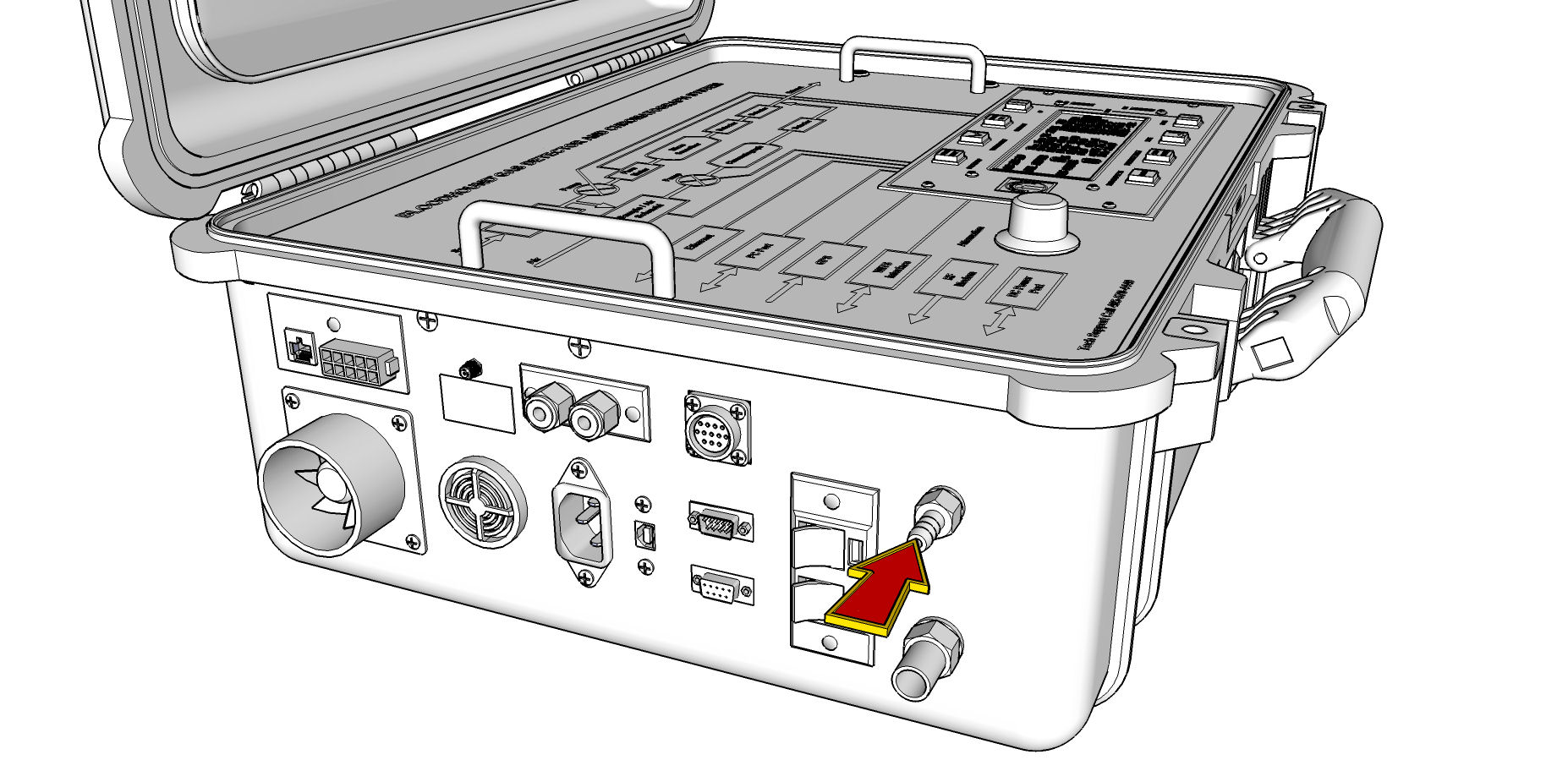
5) Take note of the time for future reference.
6) OPTIONAL: Read the Total Gas number on the display on the face of the Bloodhound during this step to verify that:
a) You are getting gas into the line and
b) The Bloodhound’s IR Gas Sensor is functioning properly.
7) After the 30 seconds are over, you may stop with the lighter and reconnect your gas line.
8) NOTE: The chromatograph takes (by default) 8 minutes to complete. Because of this, you need to wait about 10 minutes in order to check and see if the Chromatograph has indeed detected Butane (IC4/NC4). Get a cup of coffee or something while we wait for the chromatograph cycle to complete.
9) Look at Gas Chart. The left hand side of the chart is depth-based, and the right-hand side of the chart is time-based. We will be deailing with the time-based (right hand side) of the chart for this exercise. You may even see a “spike” in gas around the time you injected the lighter gas.
10) Left Double-Click in the middle of the time-based chart.
11) Drag your mouse up or down and you will see a flashing single-pixel line following your mouse.
12) Left Double-Click again and a menu will pop up (see the image below).
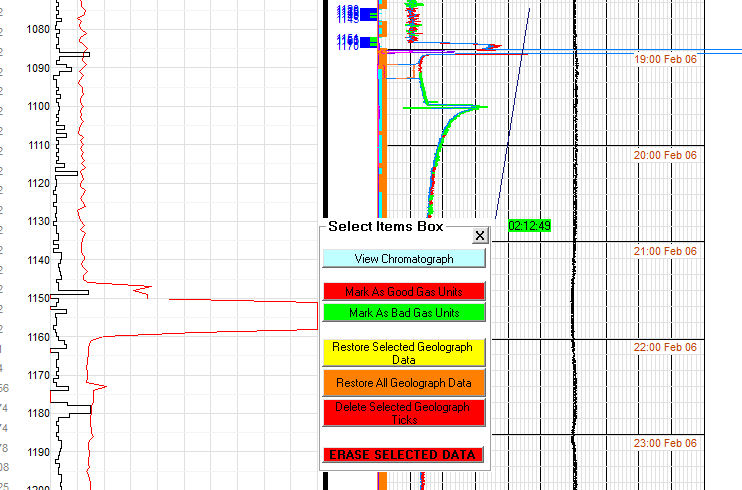
13) Click on the button that says “View Chromatograph” and you will get the following window:
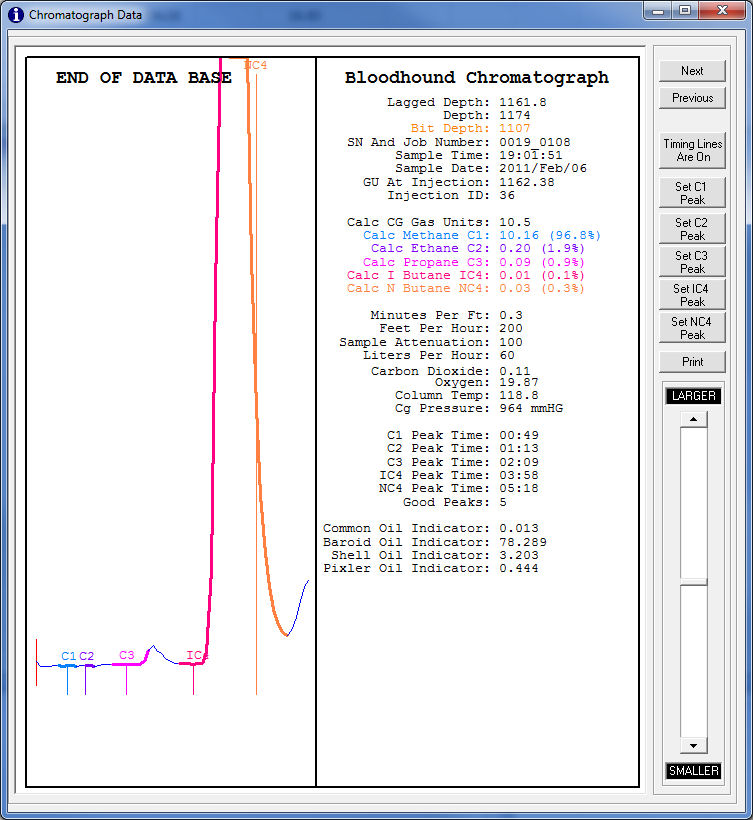
14) You have to find your latest Chromatograph cycle to determine if the Butane (IC4/NC4) was detected by the Chromatograph. Observe the “Sample Time” and “Sample Date”. Also take note of the “Next” and “Previous” buttons in the top-right portion of the screen. These are the buttons you use to go back and forth through Chromatograph cycles. The graph at the left represents from left to right the 8 minutes (by default) that the Chromatograph takes to burn through the sample injected by the solenoid we mentioned previously. So each of these that you go “Next” or “Previous” through represents 8 minutes.
15) Click on the “Next” button until you get to a graph that clearly shows a spike in Butane (such as the one above) or to the last sample (it won’t let you go any further, and may even say, “No More Sample Data” at the top).
16) If you clicked too far (into the next Chromatograph which is currently running) it will look only partially done. You can just click “Previous” and “Next” to get to the sample you injected the butane into.
17) If you’ve homed in on the proper sample, you should see a significant spike in Butane (as above). You can verify this with the time you injected the butane against the “Sample Time” above. If you see Butane (IC4/NC4) your Chromatograph is most likely working well. If not, repeat the exercise. If there is still no butane showing up, please escalate the issue accordingly, whether to internal staff or to Bloodhound Support.
Congratulations! You have performed a Bloodhound Chromatograph Lighter Test.